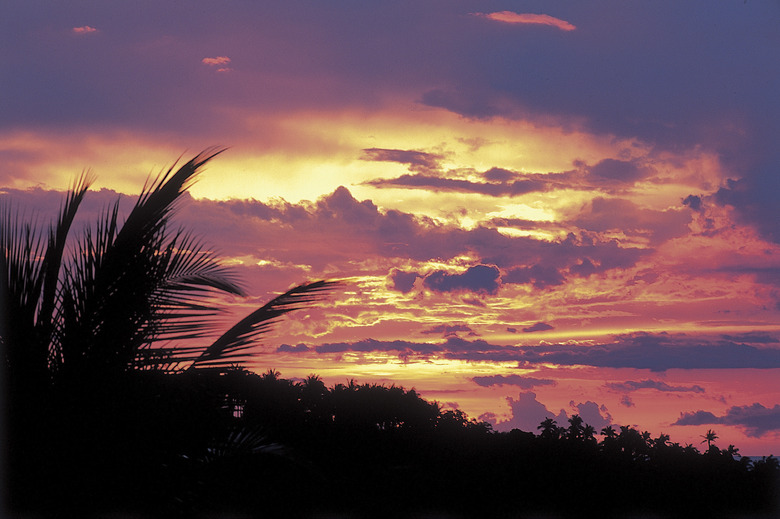How Fast Will A Majesty Palm Grow Outside?
Majesty palms (Ravenea spp.) are a busy mom's best friend: lush, exotic-looking and quite tolerant, they will provide years of service and require little labor in the home landscape. Generally the rate at which majesty palm grows is dependent on species, over which topic there is some confusion. Since there are two main species, one of which grows markedly taller and the other of which grows faster, be sure to distinguish between them before planting.
Identification
Step 1
Usually majesty palms are identified as Ravenea rivularis. However, Ravenea glauca may also be labeled majesty palm or "mini majesty." Both likely hail from Madagascar, where they grow as understory plants, doing well in the partial or dappled shade beneath larger tropical trees. Because they take so well to containers and tolerate shade, majesty palms also grow well indoors. They are hardy in U.S. Department of Agriculture plant hardiness zones 9 through 11 and do not tolerate frost; if freezes are a possibility in your area, grow them in containers and overwinter indoors.
- Majesty palms (Ravenea spp.)
- They are hardy in U.S. Department of Agriculture plant hardiness zones 9 through 11 and do not tolerate frost; if freezes are a possibility in your area, grow them in containers and overwinter indoors.
Ravenea Rivularis
Step 1
Ravenea rivularis has a moderate growth rate, and may grow only a foot or so per year. Although it usually tops out between 20 to 40 feet or so in the home landscape, estimates of its maximum height in the wild range from 60 to 80 feet. If your palm has been showing signs of distress or is losing fronds and therefore height, it may be because of transplanting. Majesty palms are very sensitive to moves and, once moved, may not do well in sunlight again.
Ravenea Glauca
Step 1
This majesty palm grows faster than Ravenea rivularis. Its rapid growth rate means it can add upwards of 24 inches to its height in a single growing season. Because of this, it isn't as suited to a small outdoor landscape as its counterpart. However, despite its faster rate of growth, it is a shorter specimen, usually growing to only 15 or 20 feet. Therefore you can use it to quickly fill smaller gaps in the landscape.
- Ravenea rivularis has a moderate growth rate, and may grow only a foot or so per year.
- However, despite its faster rate of growth, it is a shorter specimen, usually growing to only 15 or 20 feet.
Culture and Uses
Step 1
These single-stem palms with their wide canopy of swaying fronds make for good specimen pieces and also do well grouped in a mass planting or used as a screen. Some compare these palms to "living sculptures," so site them appropriately either in the garden or the home, in a place where they will receive partial shade. Water them only when soil becomes dried out, otherwise you risk root rot.
